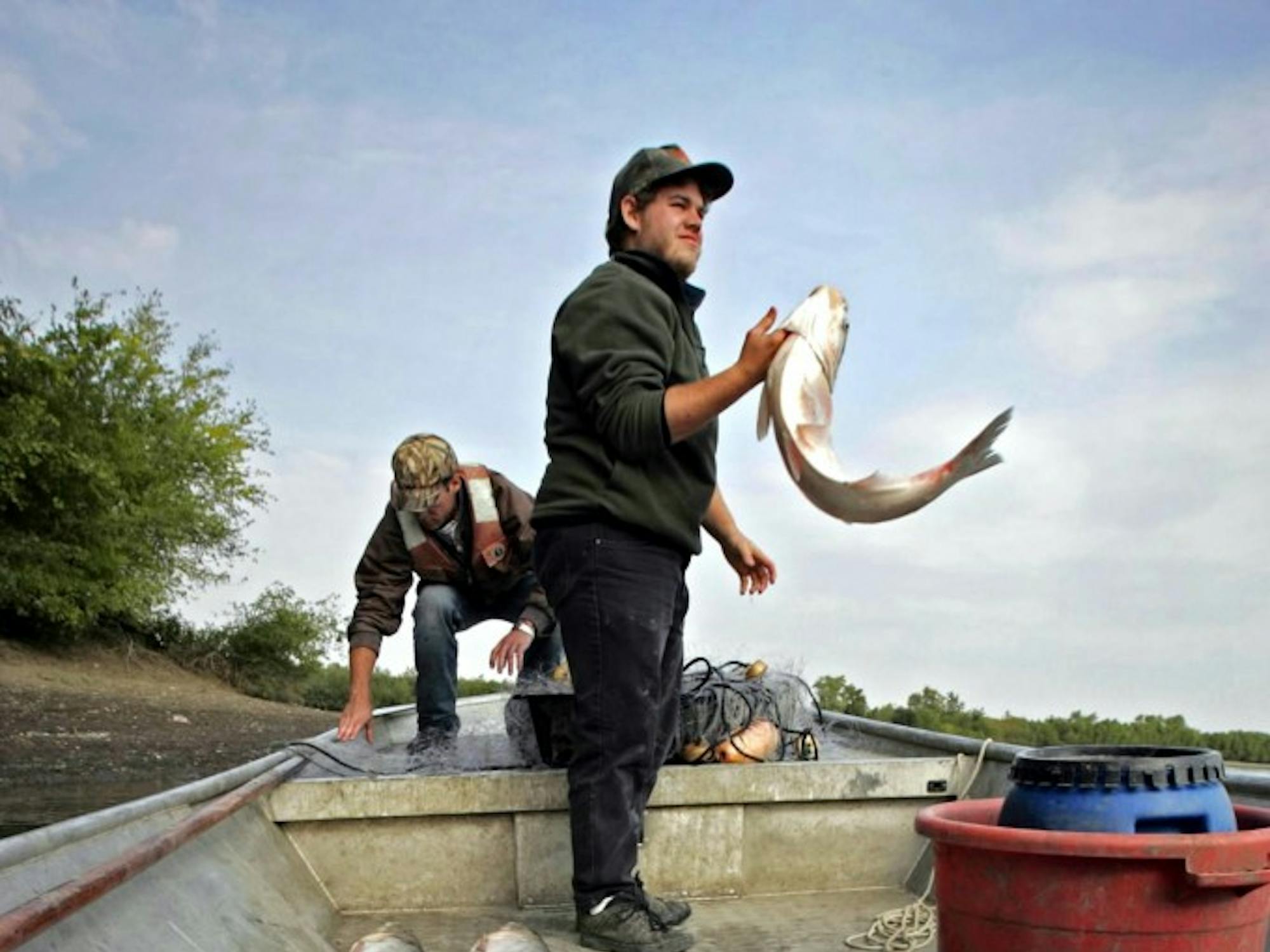DETROIT- Two feared species of Asian carp have zoomed beyond the $9 million electric barriers built to keep them out of Lake Michigan. Now, the only thing left between the carp and the Great Lakes is a lock and dam in southern Chicago.
So far, the fish have managed to swim past nine other locks on their 600-mile, 16-year journey up the Mississippi and Illinois rivers to within a few miles of the Great Lakes.
No one knows exactly where the fish are now, but officials said Friday the latest DNA results don’t lie: Tests at the end of September and early October showed 32 positive hits for carp DNA in the Calumet Sag Channel of the Chicago Sanitary and Ship Canal, even though no actual Asian carp have been found.
That puts the fish miles past the electric barriers and a mile below the O’Brien lock and dam in southern Chicago. Beyond that lock is a 7-mile stretch of open water leading to Lake Michigan.
Sampling of water in that stretch is not complete, but so far shows no carp DNA.
Conservation groups called for an immediate closure of all Illinois gateways and locks leading to Lake Michigan.
“The situation is so drastic, every possible pathway into the lake has got to be blocked, period,” said Jeff Skelding of the Healing Our Waters-Great Lakes Coalition. “If the carp get in, it’s game over. “
Barge operators already are upset over a planned closure of the canal for a few days in early December to allow officials to poison all the fish below the electric barriers and do routine maintenance work on one of them. A total shutdown would ground the 18,500 barges that pass through the port of Chicago each year, said Lynn Muench, vice president of the American Waterways Operators.
The barges carry oil, cement, coal, stone and the like, which would have to be off-loaded onto trucks or rail cars to get to their destinations if the locks are closed, adding to air pollution, she said.
“We are committed to doing everything possible to keep them out of the Great Lakes, but it’s too soon to say what the response would be at this point,” said John Rogner, director of the Illinois Department of Natural Resources.
Officials said they have more samples yet to process, but it takes 10 to 14 days to do, so they may have more evidence soon of how far the carp have moved. So far, DNA evidence has shown them in several rivers, canals and locks downstream from Chicago.
Although the news was glum, some insisted it’s too early to lose hope. There was one bright spot, which is that testing does not show evidence of carp in the ship canal leading up to the lock at Navy Pier in downtown Chicago. On the other hand, the carp are in the Calumet River, which has two tributaries that join Lake Michigan in Indiana.
John Lodge, the University of Notre Dame biologist who has done all of the DNA sampling, said no one knows for certain how the fish would fare in the Great Lakes. So far, they’ve taken over only large rivers.
“It’s too early to give up,” Lodge said. Perhaps too few fish would invade to be able to establish themselves, he said.
However, past research indicates that the fish would be quite happy in every one of the Great Lakes, except Superior, which is too cold. A bighead carp can eat 40 percent of its weight daily in plankton and grow to 80 pounds or more. By vacuuming up all the food other fish and species rely on, the carp become dominant. Because they are an invasive species, the fish have no natural predators in North American waters.










